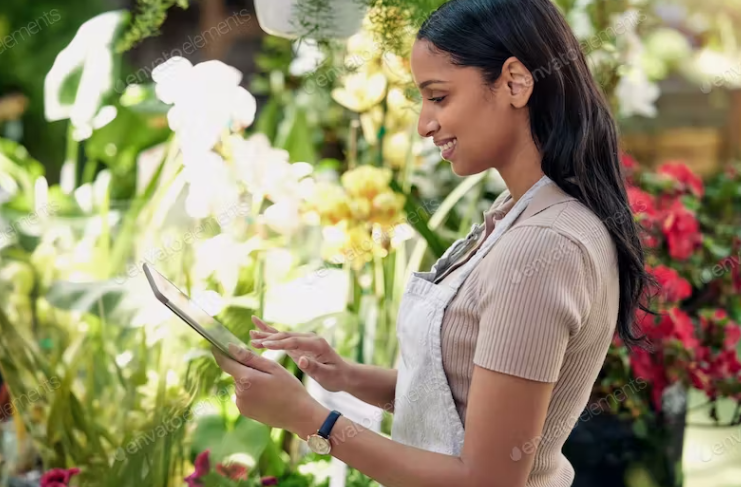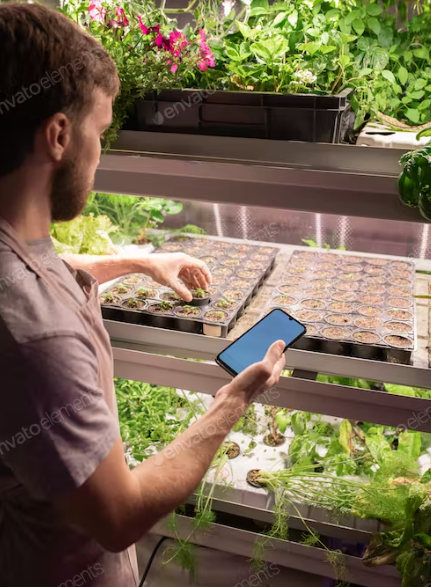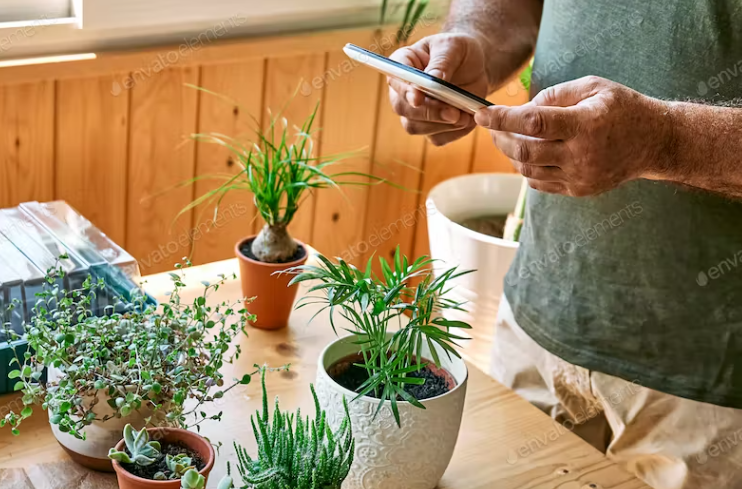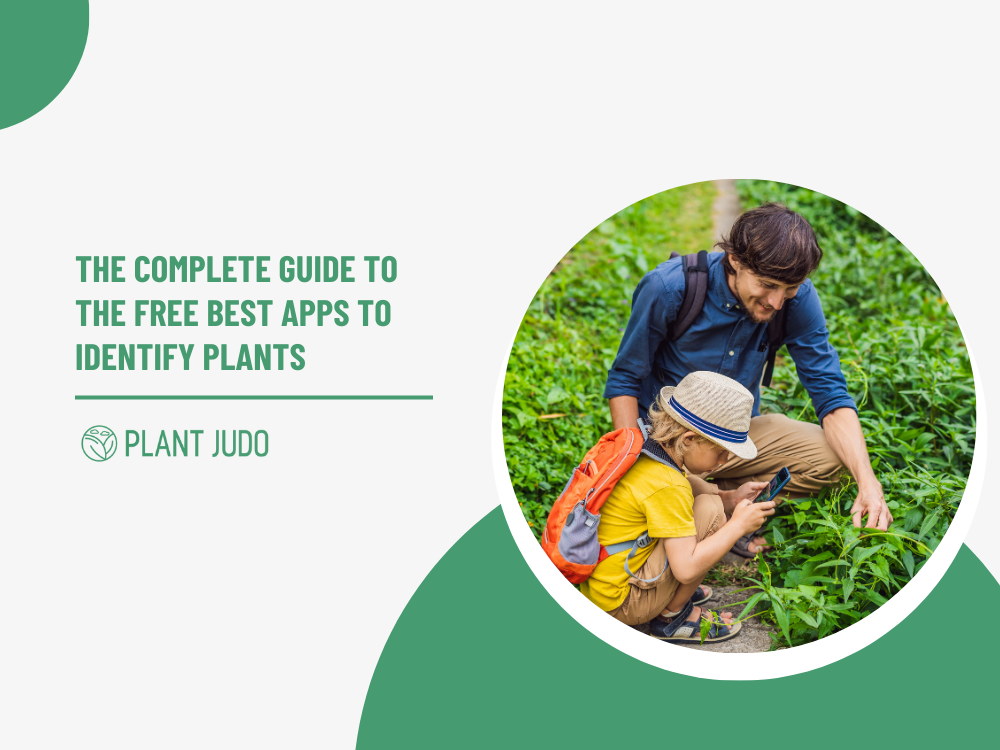
Maybe you’re an amateur botanist or a curious on-looker wondering what plant is in the middle of your backyard. It sure can be annoying when you go through hours of searching when you scour the internet to try finding the image of a similar-looking plant but to no avail. What if it told you there are actually apps created to help you with just that purpose? Let’s talk a bit more about these plants.
How to Identify a Plant Using Your Smartphone

Here are some tips on how to identify a plant with a smartphone:
- Find an app that suits your needs. There are many different plant identification apps available, so make sure to choose one that is right for you.
- Take a clear photo of the plant in question. The app will likely need a good plant image to identify it accurately.
- Follow the instructions on the app. Most plant identification apps will have you input information about the plant before giving you the results.
- Compare the results with what you already know about the plant.
The Top 14 Best Free Apps to Identify Plants

1. The iNaturalist
There are many ways to identify plants, but one of the most popular methods is using the iNaturalist app. This app is available for Android and iOS devices and allows users to take pictures of plants and submit them for identification. The app then uses machine learning algorithms to try and identify the plant based on the submitted photos.
One of the benefits of using the iNaturalist app is that it can help you learn about new plants. When you submit a picture of a plant for identification, you also have the option to include information about where you found it and what time of year it was.
This can help keep track of when certain plants bloom or fruit. Additionally, the app can provide information about a plant’s range, habitat, and conservation status.
2. The PlantNet
If you’re ever out on a nature hike and come across a plant you can’t identify, there’s now an app for that. PlantNet is a free app that allows users to take a photo of the plant in question and upload it to the app.
The app then uses image recognition technology to try and identify the plant. If it’s successful, the app will provide information on the plant, including its scientific name, common names, and where it’s typically found.
The app is available for Android and iOS devices and doesn’t require an internet connection to work. That means you can use it even when you’re out in the middle of nowhere with no cell service.
So why would you want to use PlantNet? For one, it can help you avoid eating or touching plants that might be poisonous.
3. The PictureThis
If you’re one of those people who can never remember the name of that plant you saw on your nature walk, PictureThis is the app for you. With this app, simply take a photo of the plant in question and it will give you its name, plus information on its care.
PictureThis is not only helpful for when you’re out and about. It’s also great for when you’re at the nursery trying to choose what plants to buy for your home. No more guessing which plant is which! Simply snap a photo and find out all the info you need to make an informed decision.
So whether you’re looking to ID a plant or get guidance on what will work best in your space, PictureThis is a must-have app for any plant lover.
4. The Plantix
Plantix is free and available on both iOS and Android devices. The app analyses the given plant picture and then analyses the image and gives you information about the plant, including its Latin name, family, and some of its common uses.
If you’re not sure what the plant is, Plantix can also give you some tips on how to ID it. For example, if you take a picture of a leaf, the app might suggest that you try taking a picture of the flower or fruit as well.
5. The Plantifier
Plantifier, a new app for the iPhone and Android, helps to identify plants. The app uses the phone’s camera to generate a near-instantaneous list of possible plants, including their scientific and common names.
There are many benefits to using Plantifier. First, it’s a quick and easy way to identify plants. Second, it can help you learn more about the plants around you. And third, it’s free to use! So if you’re ever curious about a plant you see, be sure to download Plantifier and give it a try.
6. The Google Images
The Google Images app is an excellent tool for identifying plants. With its vast database of images, the app can quickly identify a plant based on a photo.
There are several benefits to using the Google Images app to identify plants, such as it is easy to use, and all you need is a photo of the plant, and the app will do the rest. Second, the app is accurate. It has correctly identified 91% of the planets in our test group, and the best benefit of all, it is free to use.
There are also some disadvantages to using the Google Images app to identify plants, however, such as it requires an internet connection and it may not be able to identify rare or unusual plants.
7. The LeafSnap
LeafSnap is one of the apps that helps you identify plants by their leaves. It is a valuable tool for gardeners, nature enthusiasts, and anyone who wants to learn more about the plants around them. LeafSnap has a database of over 150,000 plants, and it can identify most species with 90% accuracy.
The app is easy to use. Simply take a leaf picture, and LeafSnap will show you a list of possible matches. You can then narrow down the results by selecting the plant’s habitat, colour, shape, and other characteristics.
Once you’ve found the correct plant, LeafSnap will show you information about it, including its scientific and common names.
LeafSnap has many benefits that make it a valuable tool for plant lovers of all levels of expertise.
8. The FlowerChecker
If you’re one of those people who can’t tell a daisy from a dandelion, there’s hope. A new app called FlowerChecker can help you identify plants with your smartphone.
The app is designed to be user-friendly – all you have to do is take a picture of the plant in question and upload it to the app. Then, the app will give you a list of possible matches. You can narrow down the results by choosing the plant’s colour, size, and location.
The best part is that FlowerChecker doesn’t require an internet connection to work. So even if you’re in the middle of nowhere, you can still find out what that strange plant is.
Whether you’re a gardener, hiker, or simply someone who loves nature, this app is sure to come in handy.
9. The “What’s That Flower”
What’s That Flower is an app that helps you identify plants. It’s a great way to learn about the benefits and advantages of different plants.
What’s That Flower is a free app available for both iPhone and Android devices and contains a database of over 20,000 plants, so you’re sure to find what you’re looking for.
What’s That Flower is easy to use. Simply take a picture of the plant you want to identify, and the app will give you a list of options. You can also search by plant name if you know it.
What’s That Flower is a great way to learn about the benefits and advantages of different plants. So download it today and start exploring the world of plants!
10. The Smart Plant
Smart Plant is a new mobile application that uses artificial intelligence to identify plants. Simply take a photo of the plant in question and the app will provide you with its name and some basic information about it.
Smart Plant is not only beneficial for those moments when you can’t remember the name of a particular plant. It can also be used to learn more about the plants around you. By providing users with information about the plants they encounter, the app can help them to develop a greater appreciation for the natural world.
So, whether you’re trying to impress your friends with your plant knowledge or simply want to learn more about the flora around you, Smart Plant is worth checking out.
11. The Agrobase
Agrobase is an app designed to help farmers and gardeners identify plants. The app contains a database of over 200,000 plants, and users can search for plants by name, type, or location.
The app also provides information on the benefits of each plant, as well as the advantages and disadvantages of growing each plant. For example, some plants may be more resistant to pests or diseases, while others may require more water or sunlight.
Users can also add their plants to the database, and share information with other users. The app is available in English, Spanish, Portuguese, French, German, Italian, Dutch, and Chinese.
11. The PlantSnap
The PlantSnap app is a revolutionary new way to identify plants. With this app, you can take a plant picture and instantly get information on what it is. This app is not only beneficial for those who are interested in plants but also for those who need to identify a plant for allergy purposes.
The PlantSnap app has many benefits such as it is user-friendly and highly accurate. The app uses artificial intelligence to identify the plant in the photo and provide information on it. The accuracy of the app has been tested and verified by experts.
The PlantSnap app also has an advantage over other similar apps. This app does not require an internet connection to work. This means that you can use the app even when you are offline.
12. The Gardening Companion
A new gardening app is available to help identify plants. Gardening Companion has a database of over 10,000 plants. It can be used to identify flowers, vegetables, and fruits and also includes information on caring and planting.
Gardening Companion is available for both iOS and Android devices. It is a free download from the App Store and Google Play.
The app has several benefits:
1) You can use it without an internet connection.
2) The app is available in multiple languages.
3) Gardening Companion can identify plants even if you don’t know their name.
4) The app includes information on plant care and planting.
5) You can add photos and notes to each plant entry.
13. The Garden Compass
Garden Compass is designed to help gardeners of all levels identify plants, flowers, and trees. Garden Compass offers several benefits, including:
- A database of over 20,000 plants, flowers, and trees
- The ability to search by plant name, flower colour, or tree type
- Detailed information about each plant, including photos and descriptions
- The ability to create a personal gardening journal
Garden Compass is the perfect tool for anyone who wants to improve their gardening skills. With its comprehensive database and easy-to-use interface, it’s the perfect way to learn more about the plants in your garden.
14. The iPflanzen
The iPflanzen app is a new and innovative way to identify plants. It offers many benefits and advantages over traditional methods of plant identification.
One of the main benefits of iPflanzen is that it is much more accurate than traditional methods. This is because the app uses artificial intelligence to identify plants. This means that it can tell the difference between different types of plants, even if they look very similar.
Another advantage of iPflanzen is that it is very easy to use. All you need to do is take a picture of the plant you want to identify, and the app will do the rest. This makes it perfect for people who are not experts in plant identification.
Overall, the iPflanzen app is a great new tool for identifying plants.
Conclusion

- These apps are great resources for those looking to learn more about the plant life around them.
- They are easy to use and provide accurate information on a variety of plants.
- Whether a novice gardener or an experienced botanist, these apps are a valuable tool for anyone interested in plants.
FAQs
Are plant identifier apps safe?
Plant identifier app is safe and can be used without the fear of harming the user. The Plant identification app is not just for professionals but also for amateurs who want to identify plants in their garden or backyard. They are easy to use, do not require any Internet connection, and provide accurate results.
Can I take a picture with my phone to identify a plant?
You can use Google Lens to identify objects with a single tap. You can do this by pointing your camera at a plant, animal, landmark or product, and Google Lens will show you information about it.
The iPhone can identify what types of things?
You can learn more about landmarks, pets, plants, books, and flowers using the phone. The feature can only be used on iOS 15 devices. In addition, only US users can utilise this feature.


